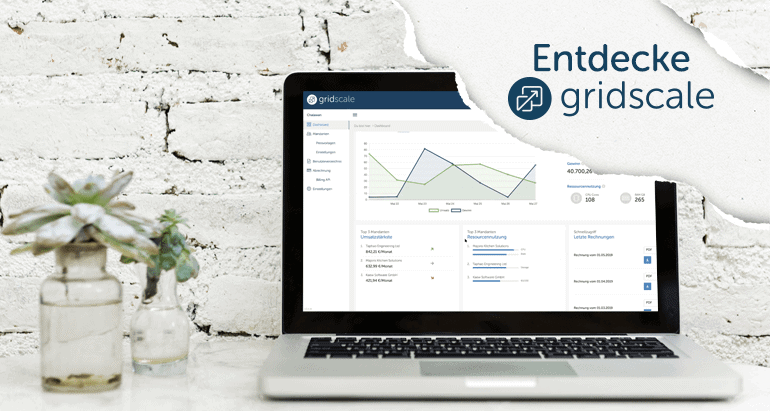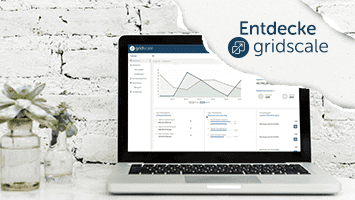
gridscale Explained: Storage Best Practices
In the third post of the gridscale Explained series, we’d like to guide you through our storage offerings and some best practices for using them.
Our offerings are divided into three different categories: Distributed, Rocket and Object Storage. A server can have up to eight storages consisting of one Rocket Storage, seven Distributed Storages along with one ISO attached to it. Although there are limits on the maximum available storage capacity, these can be extended by reaching out to us.
Here is a comparison of our storage classes, detailing the various IOPS and Bandwidth specifications.
Distributed Storage
Designed for high data availability, our Distributed Storages are offered across different performance classes, namely Standard, High and Insane. All data is replicated thrice within a location, making sure that data is available at all times allowing for autorecovery and failover mechanisms.
Rocket Storage
Our high performance Rocket Storage boasts ultra-low latencies and high IOPS. Based on blazing-fast NVMe, these local storages are physically attached to the servers. This is the ideal solution should you choose to run advanced database systems or enterprise-grade workloads. With a RAID 10 implementation over four disks within a compute node, they are not replicated like Distributed Storage over multiple storage servers. Therefore it is recommended to have a backup plan to recover your data.
Object Storage
The third storage variant is S3-Compatible Object Storage which allows you to securely access data from anywhere via the internet including websites, mobile applications or IoT devices. Our easy-to-use interface ensures you don’t need to move data between projects. Using the Object Storage interface, you can manage access keys and your buckets. Being S3-compliant, we support tools such as Cyberduck and s3cmd. To learn more about how to set up access keys and how to use bucket and object operations using the s3api, go through our documentation.
In the future it will be possible to create access keys that have limited access to certain buckets. You also have the ability to create buckets in other data centers where Object Storage is available.
Other Object Storage features available:
- Host a static public website by enabling the Bucket Website
- Add an extra security layer for easy recovery from potential failures or errors by enabling Bucket Versioning
- Automatically delete objects by setting bucket-level rules within the Bucket Lifecycle
We’re constantly updating our Product Documentation to include various use cases. If there’s a particular use case that you’d like covered, drop us an email and our team will update the documentation accordingly.
Storage Cloning
To speed up development time, you can clone your storages to fulfill needs such as replicating live and staging environments. Or, if you wish to move a storage to a different project, you can use storage cloning as a temporary backup. This way you can minimise the possibility of potential data losses. Perform a storage clone, and then move your storage to your project of choice. Once you’ve verified your setup, you can then remove the cloned storage. This is currently only available for Distributed Storage.
Storage Encryption
In the interest of ensuring security, we highly recommend that you add an extra layer of protection by encrypting your storages. This enables you to mitigate the risk of unauthorized access, an essential step towards compliance and data privacy. In order to encrypt your storages, you can use cryptsetup for Linux, or VeraCrypt for Windows.
Backup Center
The Backup Center is a centralised section that allows you to perform several tasks such as rolling back storages, creating new ones, and setting automatic backup defaults for new storages. To read more, visit our Backup Center blog post.
Recovery – Booting from ISO
In the unfortunate event that your storage attached to a server is no longer functional or has been compromised, you have the possibility to recover the storage by performing the following steps:
Attach your ISO to the server you wish to recover
- Reboot the server, which then boots from the attached ISO
- Perform your recovery steps
- Once completed, detach the ISO from the server
- Reboot from the original storage, and you should have everything functioning once again!
Marketplace
For open source offerings and individual software vendors, you have the possibility to share applications directly via gridscale. You can learn more about our Marketplace offering in our tutorial.
If you wish to share a Marketplace application privately, you can do so by navigating to the Expert Panel and sharing the hash value. You also have the option to directly click to copy the hash value, allowing you to seamlessly share your application in private.
We hope that this post offered insights into our array of Storage offerings, and Our first post covered the differences between the Easy and Expert Panels of the gridscale platform, while the second post highlighted best practices for security and accounts. We’d also recommend going through our product documentation for more details regarding all of the offerings that gridscale provides.
We hope this guide has offered valuable insights into the variety of storages and associated possibilities available at your disposal.
To stay up to date with recent news, subscribe to our RSS feeds:Blog, Tutorials, Release Notes
